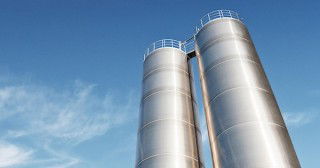The cement and concrete industry is re-inventing itself through new and efficient processes to not only reverse its environmental impact, but to make improvements to the whole supply chain of the building materials industry. This sustainability drive has seen the emergence of low-clinker cements, including cements that have a reduced lime content. By Dr Vahit Atakan, Dr Sada Sahu and Dr Nick DeCristofaro, Solidia Technologies, USA.
Recognising the need to lower its carbon and energy footprints, the cement industry actively pursues four practices that can help reduce the industry’s carbon footprint:
- improvement of energy efficiency in cement production
- alternative fuel use
- clinker substitution
- carbon capture and storage.
As part of a strategic approach to meet its CO2 reduction goals and conserve energy and natural resources, the industry has also adapted clinker substitution technologies. In addition to transforming a waste product into a usable commodity, low-clinker cements can help save energy, reduce pollutants and lower the consumption of raw materials.
